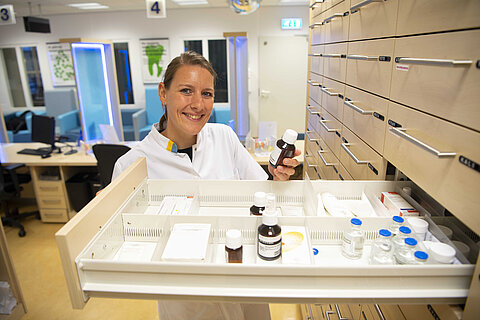Veilig werken met geneesmiddelen
In umc's werken veel medewerkers met geneesmiddelen, bij de behandeling van patiënten en bij het doen van onderzoek. Het beroepsmatig omgaan met geneesmiddelen tijdens bijvoorbeeld bereiding en toediening kan echter schadelijk zijn voor de gezondheid en, wanneer u onvoldoende wordt beschermd, op termijn een beroepsziekte veroorzaken. Hoe groot dit gezondheidsrisico is hangt af van het soort geneesmiddel en de omgang ermee. De apotheek van uw umc zorgt voor een actuele lijst van gebruikte geneesmiddelen met gevaarsclassificaties. In de (elektronische) toedienregistratie staat, zo nodig, een waarschuwing voor de gevaren van de stof en risico’s tijdens gebruik. Op deze website vindt u wat u zelf kunt doen om veilig te werken met geneesmiddelen en hoe uw arboadviseur, uw umc en de overheid u daarbij ondersteunen. De arbocatalogus is een dynamisch geheel en wordt gaandeweg aangevuld met good practices van veilige werkmethoden.

